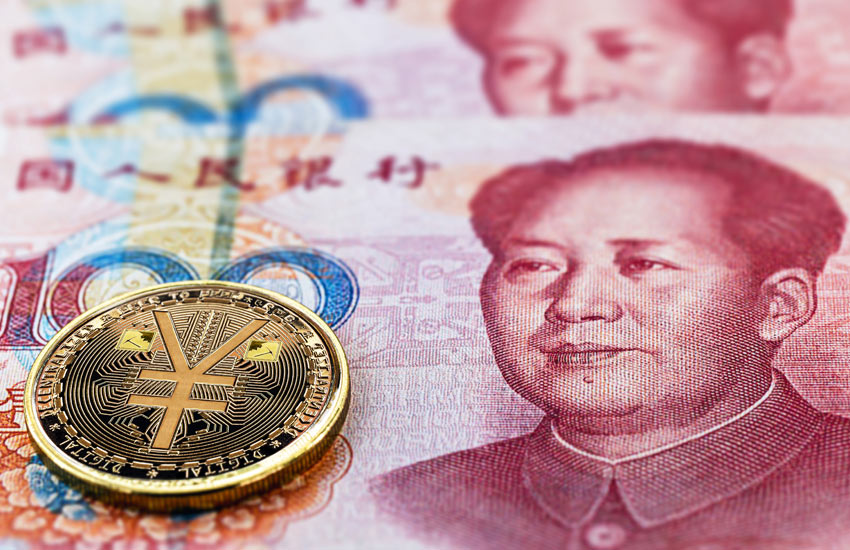China's Yuan-Pegged Stablecoin Debuts in Kazakhstan: A Strategic Blockchain Diplomacy Move
China's Yuan-Pegged Stablecoin Debuts in Kazakhstan: A Strategic Blockchain Diplomacy Move
By
David Goldfarb
Last updated:
September 30, 2025
First Published:
September 30, 2025

China's Strategic Blockchain Diplomacy
In a significant development in the realm of digital finance, China has launched the world's first regulated offshore yuan-pegged stablecoin, known as AxCNH, in Kazakhstan. This move marks a pivotal step in China's strategy to expand the international use of its currency and assert its influence in the global blockchain ecosystem.
The Emergence of AxCNH
AxCNH is a stablecoin pegged to the offshore Chinese yuan (CNH) and was introduced on September 17, 2025, following approval from Kazakhstan's financial authorities. Developed by Hong Kong-based fintech firm AnchorX and supported by Conflux, a Chinese government-backed blockchain network, AxCNH aims to facilitate secure and efficient cross-border transactions, particularly for Chinese businesses and Belt and Road Initiative partners.
Kazakhstan: A Strategic Partner in Blockchain Diplomacy
Kazakhstan's selection as the launch site for AxCNH underscores its growing role as a hub for digital innovation in Central Asia. The country's regulatory environment, which includes the Astana Financial Services Authority's approval of AxCNH, positions it as a favorable partner for China's blockchain initiatives.
China's Motivation: Reducing Dollar Dependence
The introduction of AxCNH aligns with China's broader objective to reduce global reliance on the U.S. dollar in digital finance. By promoting the use of the yuan in international transactions, China seeks to enhance its economic sovereignty and mitigate the impact of U.S. sanctions on its financial system.
Technological Infrastructure: Leveraging Conflux
Conflux's blockchain technology underpins AxCNH, providing a secure and scalable platform for digital transactions. Conflux's support ensures that AxCNH can handle high transaction volumes with low latency, making it suitable for real-time cross-border payments.
Regulatory Oversight: Ensuring Compliance
Kazakhstan's regulatory framework, exemplified by the Astana Financial Services Authority's approval, provides a structured environment for the operation of AxCNH. This regulatory oversight ensures that AxCNH adheres to international financial standards, fostering trust among users and investors.
Implications for Global Trade and Finance
The deployment of AxCNH has the potential to reshape global trade dynamics by offering an alternative to dollar-dominated financial systems. Businesses engaged in cross-border trade with China may find AxCNH a more efficient and cost-effective means of conducting transactions, thereby promoting the internationalization of the yuan.
Kazakhstan's Role in the Belt and Road Initiative
Kazakhstan's involvement in the launch of AxCNH highlights its strategic position within China's Belt and Road Initiative. By participating in this digital finance project, Kazakhstan enhances its economic ties with China and positions itself as a key player in regional economic integration.
Future Prospects: Expansion Beyond Kazakhstan
While AxCNH's initial deployment is in Kazakhstan, China's long-term vision includes expanding the use of yuan-pegged stablecoins to other countries participating in the Belt and Road Initiative. This expansion aims to create a network of digital financial systems that facilitate seamless cross-border transactions and promote the global use of the yuan.
A New Era in Digital Finance
China's launch of AxCNH in Kazakhstan represents a significant milestone in the evolution of digital finance. By leveraging blockchain technology and strategic partnerships, China is positioning the yuan as a formidable player in the global digital economy. As the adoption of AxCNH grows, it may pave the way for a more diversified and resilient global financial system.
Popular articles
Subscribe to unlock premium content
Disney’s Timeless Magic and How the Entertainment Giant Continues to Shape Culture and Innovation

Imran Khan’s Economic Missteps Amid Political Chaos in Pakistan

The Philippines’ Digital Shift How Remittances and BPO Are Fueling Growth

Disney’s Timeless Magic and How the Entertainment Giant Continues to Shape Culture and Innovation

Imran Khan’s Economic Missteps Amid Political Chaos in Pakistan

Disney’s Timeless Magic and How the Entertainment Giant Continues to Shape Culture and Innovation









